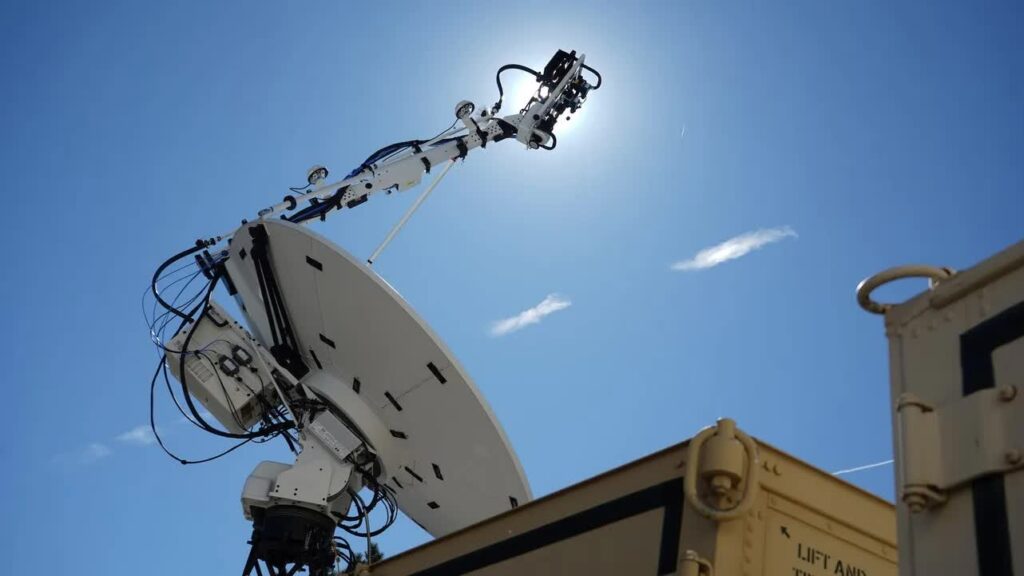What the crew of this German warship did after 9/11 will give you chills
- By We Are the Mighty
Share This Article

This story by Ian D’Costa originally appeared on We Are the Mighty
The immediate aftermath of the Sept. 11, 2001, attacks on the United States left the country in great fear and sorrow. The surprise of such an offensive onslaught and the immense loss of civilian life shook America to its core, as well as its allies and military partners in North America and abroad.
America, however, was never alone in its time of need, and numerous heartwarming displays of support from foreign countries made American citizens and members of the military well aware of that.
One such display came from the Bundesmarine – the German navy – days after the attacks.
Ensign Megan Hallinan recounted the incident while serving aboard the USS Winston Churchill (DDG-81), an Arleigh Burke-class destroyer, in a now-famous email to her father.
At the time of the attacks, the Churchill was the US Navy’s newest destroyer, having just been commissioned into service in May of 2001. On a visit to England for the 2001 International Festival of the Sea, the Churchill made a port call in Plymouth, along with the USS Gonzalez — another Arleigh Burke warship — and the German naval vessel Lutjens, a former West German navy destroyer.
Royal Navy personnel and crews from all three vessels were involved in friendly activities, from exploring Plymouth together while on liberty to playing sports and cookouts. Following the attacks, the Churchill and Gonzalez put out to sea again with their crews on high alert.
Lutjens was recalled as well, steaming out of Portsmouth just around the same time its American counterparts were underway.

According to Hallinan, the Churchill constantly maintained high alert levels, conducting drills to keep the crew sharp and ready for action should the need arise. Among the drills planned was a man-overboard exercise which would test and train the crew on its ability to respond quickly and effectively to rescue or recover any shipmates who might fall overboard.
The drill was delayed when the Lutjens, transiting nearby, hailed the Churchill and made a special request. Its crew wished to pass the American destroyer on its port (left) side to bid its US Navy partners farewell. The commanding officer of the Churchill readily agreed to the maneuver.
As is tradition, the Churchill’s crew began manning its rails and the port bridge wing to wish its foreign comrades well on their voyage home. As the Lutjens pulled in closer, a unique sight met the eyes of the sailors aboard the American vessel.
The Star Spangled Banner was flying with the German flag at half-mast on the Lutjens, its crew manning their ship’s rails in their blue dress uniforms. As both vessels steamed alongside each other with sailors from both navies rendering honors with crisp salutes, a banner came into view on the German warship.
Its message was simple, but spoke to the hearts of each and every American on the Churchill that day.
“We Stand by You.”

As Hallinan recalls in her email, many sailors on the Churchill fought to retain their composure, especially given the horror of the events which had befallen their countrymen and women. The Churchill would go on to support the Global War on Terrorism with numerous deployments overseas, along with the Gonzalez.
The actions of the Lutjens crew will forever be remembered by the crew aboard the Churchill that dark day in September, as well as the rest of the U.S. Navy, grateful for the unwavering support from its allies following 9/11.
Related Posts
Sandboxx News Merch
-

‘AirPower’ Classic Hoodie
$46.00 – $48.00 Select options This product has multiple variants. The options may be chosen on the product page -

‘Sandboxx News’ Trucker Cap
$27.00 Select options This product has multiple variants. The options may be chosen on the product page -

F-35 ‘Lightning’ Framed Poster
$45.00 – $111.00 Select options This product has multiple variants. The options may be chosen on the product page
We Are the Mighty
Related to: Military History

What it’s like to visit Korea’s Demilitarized Zone

Space Force to deploy new jammers to yell at enemy satellites

Ukraine peace negotiations don’t look promising

Unit 684 – The South Korean suicide squad with the tragic history
Sandboxx News
-

‘Sandboxx News’ Trucker Cap
$27.00 Select options This product has multiple variants. The options may be chosen on the product page -

‘AirPower’ Classic Hoodie
$46.00 – $48.00 Select options This product has multiple variants. The options may be chosen on the product page -

‘AirPower’ Golf Rope Hat
$31.00 Select options This product has multiple variants. The options may be chosen on the product page -

‘Sandboxx News’ Dad Hat
$27.00 Select options This product has multiple variants. The options may be chosen on the product page
